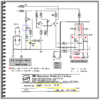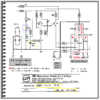Hello
Recently I’ve been having problems with the wire speed on my Ideal 120n Mig welder being far too slow. It is an old machine and there is no parts availability so I can’t just buy a new wire speed control PCB. I have read a few threads on welding forums and watched a few YouTube videos of people repairing similar issues on different machines by replacing the thyristors on the PCB. I would like to try this but I can’t seem to find new ones and I have no way of working out a modern equivalent. This is probably because I have no idea what I am looking at, I’m not even sure that they are thyristors this is just something I have read.
Any help in finding a part no. for a readily available part will be greatly appreciated. I will add a picture so you can see what I am working with.
Thanks
Recently I’ve been having problems with the wire speed on my Ideal 120n Mig welder being far too slow. It is an old machine and there is no parts availability so I can’t just buy a new wire speed control PCB. I have read a few threads on welding forums and watched a few YouTube videos of people repairing similar issues on different machines by replacing the thyristors on the PCB. I would like to try this but I can’t seem to find new ones and I have no way of working out a modern equivalent. This is probably because I have no idea what I am looking at, I’m not even sure that they are thyristors this is just something I have read.
Any help in finding a part no. for a readily available part will be greatly appreciated. I will add a picture so you can see what I am working with.
Thanks





